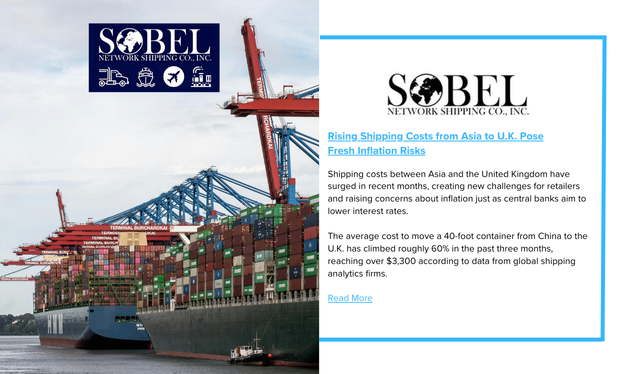Shipping costs between Asia and the United Kingdom have surged in recent months, creating new challenges for retailers and raising concerns about inflation just as central banks aim to lower interest rates.
The average cost to move a 40-foot container from China to the U.K. has climbed roughly 60% in the past three months, reaching over $3,300 according to data from global shipping analytics firms. This increase is largely attributed to ripple effects from heightened U.S. trade activity, as American companies rush to secure goods ahead of new tariffs, thereby straining global shipping capacity.
While the elevated freight rates are still far below the highs seen during the pandemic, they come at a time when British retailers are already grappling with rising costs and narrow margins. Many companies are expected to pass along these new logistics costs to consumers, potentially pushing up prices on everyday goods.
This development adds another layer of uncertainty to the U.K.’s economic outlook. Analysts suggest that the increase in freight prices could temporarily lift inflation by up to 0.3 percentage points in the third quarter—making it more difficult for policymakers to confidently reduce interest rates.
Long-term impacts are less certain. Some economists believe tariff-driven shifts in global trade could eventually ease inflationary pressures if producers respond by reducing export prices to remain competitive. For now, however, the rising shipping costs are intensifying pressure on businesses that are already dealing with payroll hikes, supply chain volatility, and broader economic softness.
A growing number of U.K. firms—nearly 40% with 10 or more employees—report concerns over supply chain disruptions heading into the next year, a sign that companies are bracing for continued logistics volatility.
Compounding the issue are port delays and labor constraints across Northern Europe, which have further limited container availability and driven up costs. Imports from China to the U.K. also remain elevated, climbing 11% year-over-year in April, adding to the strain on shipping lanes.
As many companies operate on long-term shipping contracts, the effects of these higher rates are expected to persist through the rest of the year. Industry experts warn that ongoing inefficiencies in global shipping are unlikely to ease quickly, making it critical for supply chain stakeholders to monitor developments and build cost resilience into their operations.


